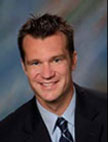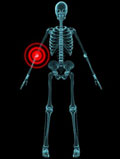|
PT Classroom - When an “itis” is not an “itis” ׀ by Bryant J. Walrod, MD |

Dr. Walrod is a Board Certified Family Practice Physician specializing in Primary Care Sports Medicine, Sports-Related Injuries and Musculoskeletal Health. Dr. Walrod holds a Certificate of Added Qualification (CAQ) in Sports Medicine after completing his Primary Care Sports Medicine fellowship training at the Medical College of Wisconsin during which he was Team Physician for the Milwaukee Brewers, Milwaukee Ballet, and the US National Speed Skating Team. He is a member of Comprehensive Orthopaedics, SC and remains on faculty at the Medical College of Wisconsin. He also actively publishes in numerous sports medicine related journals and textbooks. |
|
When an “itis” is not an “itis” |
| . |

Many times in medicine we come across terms that are
misnomers or do not accurately reflect the true pathologic
process occurring. Unfortunately, our treatments may then be
misdirected and not the most appropriate or effective for a
condition. 
This leads to the question, “What we are truly treating in
conditions like tendonitis?” Granted, in an acute overuse
injury, such as lateral epicondlyitis after a weekend of
painting the garage, there is true inflammation occurring.
But in the chronic case of refractory symptoms lasting for a
month despite rest, there is little, if any, inflammation
occurring. In fact, biopsies of tissue in chronic overuse
conditions like lateral epicondylosis reveal absolutely no
inflammatory cells; instead, simply degenerative and
disordered healing of the tissue. Again, this makes me
question, why one would inject cortisone into this area.
What is the true pathologic process occurring, and what are
we attempting to treat? 
Prolotherapy refers to injecting a pro-inflammatory agent
into a chronic non-healing tendonosis to recruit the bodies’
inflammatory process to spur growth of new and stronger
ligaments and tendons. I like to inject simple dextrose
which “turns on” the bodies’ innate ability to heal.
Dextrose is recognized as foreign by the body and it sends
inflammatory mediators there to heal it. This process
stimulates lying down of Type I collagen in a linear fashion
instead of disordered bundle of scarring that is typical in
chronic tendonoses. Histological studies demonstrate an
increase in thickness and mass in ligaments treated with
prolotherapy. Prolotherapy has demonstrated effectiveness in
conditions like medial and lateral epicondylosis, piriformis
syndrome, gluteus medius and minimus tendonopathy, Achilles
tendonopathy, posterior tibial tendonopathy, quadriceps and
patellar tendonopathy, and hamstring tendonopathy.
Last revised: May 04, 2009 |
|
|
|
|







